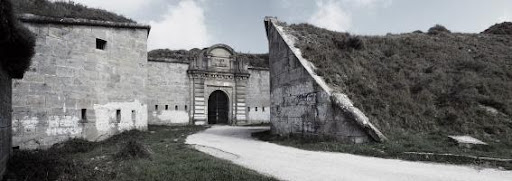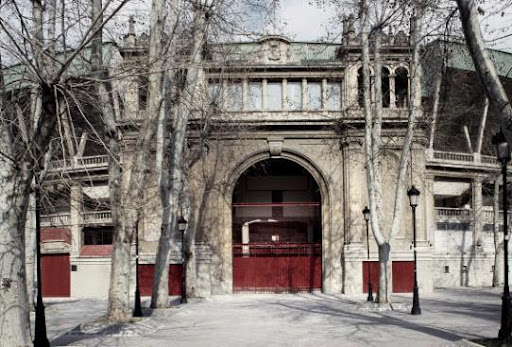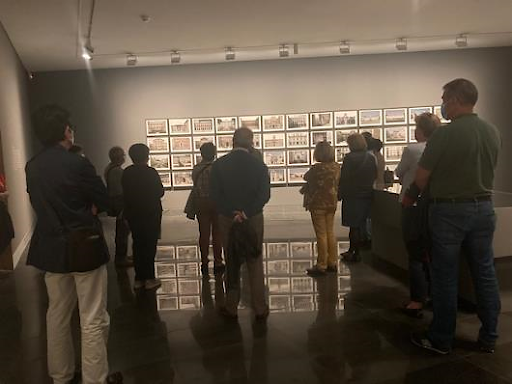22 September
visit exhibition Ana Teresa Ortega. Past and present.
The report and its construction
Ignacio Miguéliz Valcarlos
Chair of Navarrese Heritage and Art
The visit to the exhibition Ana Teresa Ortega. Past and present. The report and its construction that has taken place at the Museo Universidad de Navarra allows us an approach to one of the most interesting topics in art today, the political position adopted by the artist in front of society and the responsibility he has before it, as well as the new position he acquires as a historian. In this way, the artist ceases to be a passive subject of what he sees and reflects in his works, to become an active witness with his own voice; all this inscribed in the discussion between Theodor Adorno and Walter Benjamin on the political character of art.
In close connection with the above, Ana Teresa Ortega presents in her work an interesting reflection on universal ideas and concepts, such as the collective report and its construction, and the role we play as historians, artists and spectators in the preservation of historical events to keep the story alive, to preserve the report and not fall into oblivion, applying it to a specific case such as the Spanish civil war and the subsequent dictatorship.

She does all this through photography; at first, in the 90s, through the format of photo sculpture, which reveals her training as a sculptor, works in which she combines these two artistic techniques, photography and sculpture, in pieces that present a succession of planes that give the image a three-dimensional character. In them she offers us a critique of the media and mass culture, linked to the concern for the dehumanization of the subject and the society with which it relates, as Benjamin pointed out, which can occur if we do not remain vigilant.

This concern gave way to an interest for the historical and the collective, for the perception of universal concepts such as report and its construction, time, oblivion and absence, which he addresses mainly through the historical report . Thus, in his work he reflects in a graphic and conceptual way facts and places linked to historical events, linked to the Spanish Civil War and the post-war and Franco dictatorship, so that they do not fall into oblivion. In this sense, he includes in his work not only the creation of concentration camps, repression and forced labor, more related to the physical and human side, but also reflects the status lived by art and science, and how the war ended an era of splendor within the Spanish culture, which came to be called "silver age of science" in Spain; and does so by personifying the figures of both anonymous individuals, as well as recognized thinkers and philosophers, as they all suffered exile, both external and internal. He also applies it to the idea of Library Services as a place of collection, not only of culture, but of the universal knowledge and of the collective report .

We can also see an evolution in the format and materials of his work, parallel to the evolution of his subject matter. Thus, in the first pieces made on iron, steel and emulsified fabrics that produced an opaque and dark effect, he worked with images taken from mass media such as television or the press, which gave rise to a blurred and unfocused effect that translated the fragility of the human being. Later, the metal pieces were replaced by transparent materials, such as methacrylates, which produced successions of planes and greater lightness in his works, as well as by paper, to which must be added other formats such as installations.
